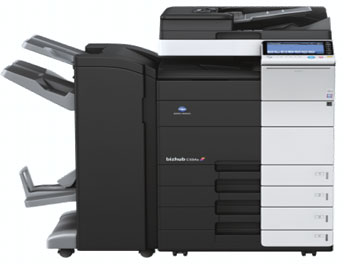IDC Predicts APeJ Print Services Market to Exceed US$6 Billion
 Managed Print Service (MPS) and Basic Print Service (BPS) markets in the Asia Pacific region, excluding Japan (APeJ), will surpass the US$6 billion mark by 2017, says IDC. Also, 2014 will be a pivotal year, IDC claims, driving market expansion into a broader customer segment and boosting revenue growth.
Managed Print Service (MPS) and Basic Print Service (BPS) markets in the Asia Pacific region, excluding Japan (APeJ), will surpass the US$6 billion mark by 2017, says IDC. Also, 2014 will be a pivotal year, IDC claims, driving market expansion into a broader customer segment and boosting revenue growth.
The move away from hardware to service proves how Vendors have taken advantage of the opportunity with multiyear business and customer benefits for cost savings, to strengthen the agility of workspace with modernized technology.
“IDC sees fundamental transformation taking place from both Vendor offerings and customer expectations in the MPS market,” says Jessie Lee, Research Manager for IPDS Research at IDC Asia/Pacific.
“Future success in the MPS market will come as a result of tapping into new opportunities by providing ‘best-in-class’ services and expanding to ‘sweet-spot’ across the Enterprise to Midmarket segment. In 2014, both quality (securing renewal and developing best practice) and penetration (channel program and developing new logos) will have significant impact on the MPS market, based on the maturity of Vendors and the country.”
Best-in-Class Experience
This strategy will be critical for Vendors to sustain customer value, provide differentiation, secure renewal and generate best practices that will stand as a symbolic reference in similar cluster or vertical markets.
Vendors will use MPS to drive more transformative opportunities revolving around digital capture, workflows, cloud integration and mobile printing enablement. IDC expects greater integration with IT services and business process outsourcing engagements and a growing focus on vertical and line-of-business solutions.
Customers (large enterprises in maturing economies, in particular) are taking a holistic approach that factors MPS into the workspace strategy and ensures this is tied to the mobility, cloud, social business and big data analytics agenda. This expectation will become more prevalent as enterprise business plans productive and innovative workspace for its employees.
The demands of future work environment are determined by the maturity of the country and its vertical industries. IDC finds Australia to be the most mature market (over 30% market share in APeJ). Financial Services and Manufacturing are the leading vertical markets (up to 47% in APeJ) while Education is gaining momentum.
IDC believes vendors must promote their capabilities and continue to develop software/solution offerings with high service level.
Expansion to Sweet-Spot
IDC believes that Enterprise (Very Large Businesses with 1000+ employees and Large Businesses with 500-999, up to 48%) will be the initial segment to drive MPS. The Midmarket (Medium Businesses 100-499, 33%) is another important segment as the decision-making process is quicker and there are fewer objections to outsourcing services by multi-tasking IT departments.
In 2014, IDC expects businesses to further fine tune their customer-targeting strategies in accordance with specific customer requirements.
Large companies require ‘best-in-class’ experience with customization and seem to be more accepting of the transition to solutions leveraging IT trends such as Cloud, Mobility, Social and Big Data. Vendors will need to analyze target customers and invest direct sales and service resources to drive revenue mainstream.
Although Midmarket has the potential to grow, extensive customer coverage and low ROI on direct resource is a pain point for Vendors. In view of the business momentum in the indirect channel segment, IDC expects channel partners including resellers, system integrators, and vertical influencers to be a crucial part of the ecosystem to reach into Midmarket organizations to gain access to more lucrative MPS/BPS business.
Determining the success of channel MPS/BPS will heavily depend on sophisticated program design (Margin Analysis; Resource Readiness; Target Horizontal/Vertical segmentation; and Split of R&R, Training, and Lead Generation by Co-Marketing) to avoid channel conflict scenarios and generate more partners in MPS/BPS ecosystem.








Leave a Comment
Want to join the discussion?Feel free to contribute!